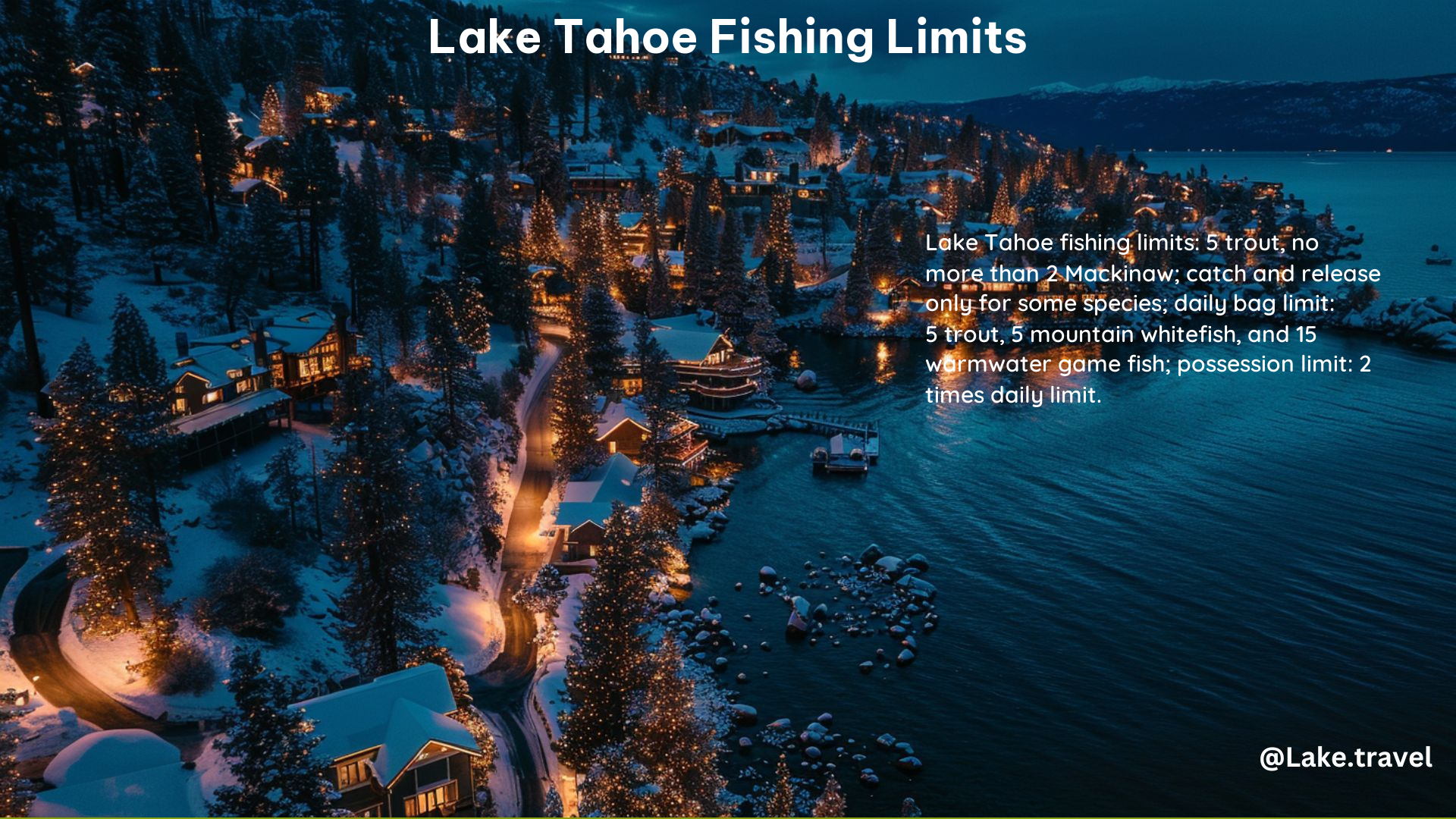Lake Tahoe, a stunning alpine lake straddling the border between California and Nevada, is a renowned destination for fishing enthusiasts. Whether you’re a seasoned angler or a newcomer to the sport, it’s crucial to understand the fishing limits and regulations in this unique ecosystem. In this comprehensive guide, we’ll dive into the details of Lake Tahoe’s fishing limits, helping you plan your next fishing adventure with confidence.
Daily Limit for Trout
The daily limit for trout in Lake Tahoe is 5 trout, with no more than 2 Mackinaw trout. This regulation applies to the main body of Lake Tahoe, as well as the surrounding lakes and streams within the Lake Tahoe Basin. It’s important to note that the daily limit is a crucial conservation measure, ensuring the sustainability of the fishery for years to come.
Live Bait Restrictions

When it comes to live bait, anglers in Lake Tahoe must be mindful of the regulations. Live bait can only be used if it is caught in Lake Tahoe itself. There is a specific list of allowed live bait species, so it’s essential for anglers to familiarize themselves with this information before heading out on the water. This restriction helps prevent the introduction of non-native species, which could disrupt the delicate ecosystem of the lake.
General Fishing Regulations
In addition to the daily limit and live bait restrictions, there are several other general regulations that anglers must be aware of when fishing in Lake Tahoe:
- Fishing is allowed year-round, from one hour before sunrise to two hours after sunset.
- Anglers aged 16 and older must possess a valid freshwater fishing license from either California or Nevada, depending on the location they are fishing in.
Possession Limits
The possession limit for fish caught in Lake Tahoe is two times the daily limit for the water in which the fish are caught. This means that anglers can possess up to 10 trout, with no more than 4 Mackinaw trout, at any given time.
Special Regulations
While the general regulations apply to most of Lake Tahoe and its surrounding waters, there are some specific areas and species that have additional rules and restrictions. For example, certain lakes and streams may have catch-and-release only regulations, or specific size limits for certain species. Anglers should familiarize themselves with these special regulations before embarking on their fishing trip.
Obtaining a Fishing License
Fishing licenses for Lake Tahoe can be obtained from various agents in the region, including charter services, sporting goods stores, and pharmacies. Anglers can choose to purchase a license from either California or Nevada, depending on the location they plan to fish in. It’s important to note that a valid fishing license is required for all anglers aged 16 and older, and failure to possess one can result in fines and penalties.
Unique Fishing Opportunities in Lake Tahoe
Lake Tahoe is home to a diverse array of fish species, including Rainbow Trout, Brown Trout, Mackinaw (Lake Trout), and Kokanee Salmon. Each species presents its own unique challenges and rewards for anglers. For example, the Mackinaw trout, also known as Lake Trout, can grow to impressive sizes and are highly sought after by trophy hunters.
In addition to the diverse fish species, Lake Tahoe offers a stunning natural backdrop for anglers. The crystal-clear waters, surrounded by towering peaks and lush forests, create a truly breathtaking setting for a fishing adventure. Many anglers also enjoy the opportunity to explore the lake’s numerous coves, inlets, and tributaries, each offering its own unique fishing opportunities.
Responsible Fishing Practices
As with any fishing destination, it’s crucial for anglers to practice responsible and sustainable fishing in Lake Tahoe. This includes adhering to the established fishing limits, using appropriate tackle and techniques, and properly handling and releasing any fish that are not kept. By following these best practices, anglers can help ensure the long-term health and vitality of the Lake Tahoe fishery for generations to come.
Conclusion
Lake Tahoe’s fishing limits and regulations are designed to protect the delicate ecosystem and ensure the sustainability of the fishery. By understanding and following these guidelines, anglers can enjoy a rewarding and responsible fishing experience in this stunning alpine lake. Whether you’re targeting trophy-sized Mackinaw trout or simply looking to spend a day on the water, Lake Tahoe offers a truly unique and unforgettable fishing adventure.
